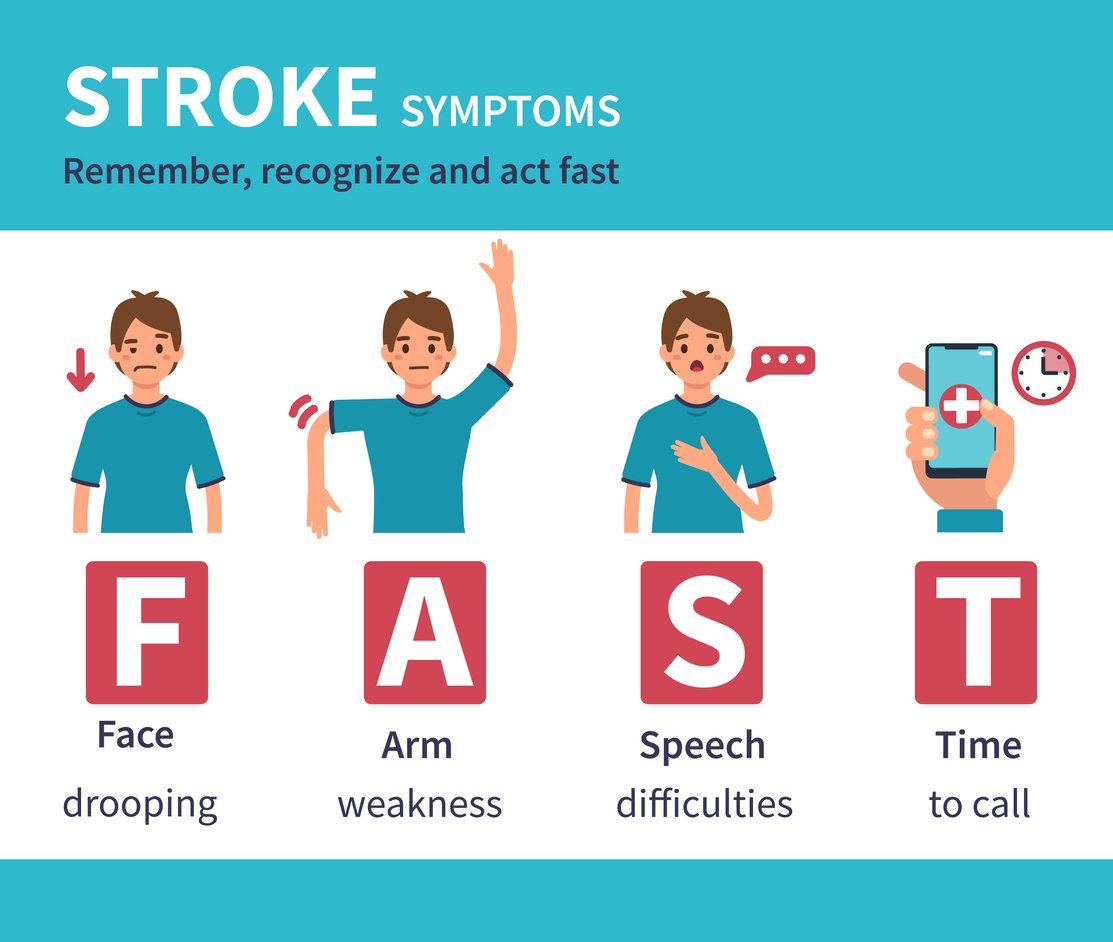Stroke Care
Sturdy Memorial Hospital is a designated primary stroke service provider by the Massachusetts Department of Public Health (DPH). A multidisciplinary team of practitioners in emergency medicine, nursing, neurology, radiology, and the laboratory provide diagnostic and therapeutic services to patients who present with acute stroke symptoms. Patients also have the support of ongoing evaluations offered by speech, occupational, and physical therapy. Additionally, the Stroke Committee oversees and monitors the programs for quality improvement and provides ongoing direction for our stroke services, assessments, and treatments.
Stroke Awareness
Stroke is a medical emergency that is a leading cause of death and disability. Recognizing the signs of stroke and seeking medical attention can prevent significant, permanent damage to the brain. Stroke is caused by interruption of blood carrying oxygen to brain cells. The interruption may be due to blockage, rupture, or damage to the lining of a blood vessel. If oxygen does not reach brain cells, affected areas of brain die quickly. Because different parts of the brain serve specific functions, symptoms of a stroke will vary depending upon the area of brain that is starved of oxygen.
Act F.A.S.T.
A half smile, a weak hug, or the silent treatment could be signs of a  stroke. Act F.A.S.T. to save a life.
stroke. Act F.A.S.T. to save a life.
Face - Ask the person to smile. A stroke can cause one side of the face to droop.
Arms - Ask the person to raise both arms. One arm drifting downward could signal a stroke.
Speech - Ask the person to repeat a simple sentence. Stroke victims may slur their words, have trouble speaking or understanding speech, or not be able to talk at all.
Time - If the person has any of these symptoms, call 9-1-1. Stroke is a life or death emergency and every minute counts.
Stroke Symptoms May Include:
- Sudden paralysis, weakness, numbness, tingling or lack of coordination of an arm or leg
- Feeling off balance when standing or inability to walk steadily
- Slurred or impaired speech
- Confusion or difficulty comprehending
- Sudden loss of vision in one eye or in part of a visual field of both eyes
- Rapid onset, progressive headache
- Difficulty swallowing resulting in aspirating (inhaling) food or liquid
A stroke symptom that lasts for minutes to hours and then resolves is called a transient ischemic attack (TIA). Like stroke, TIA requires immediate medical attention. Prompt evaluation is critical as a TIA may be the only warning sign before a stroke. Sometimes, what is thought to be a TIA may actually be a developing stroke.
Risk Factors
Risk factors that we can change to prevent stroke include high blood pressure, high cholesterol, diabetes, obesity or physical inactivity, poor dietary habits, and tobacco use. As blood vessels age, disease can accumulate that increase stroke risk, and so age older than 80 years and genetic predisposition are risk factors not within our control to change.
Prevention
Improving diet and exercise habits are important aspects of prevention. Appropriate exercise consists of moderate or vigorous activity, lasting at least 40 minutes at a time. Before you begin an exercise plan, consult your doctor. Avoid high salt content or processed food, fried or fast food, sweets or sugary drinks such as soda, and sauces, toppings, or other foods that are high in saturated fat.
Start on a path to prevention today and live an active, healthier life. If you do suffer stroke or TIA symptoms, call 911 to get the medical attention you need. When it comes to stroke, minutes matter for brain cells at risk: act fast!